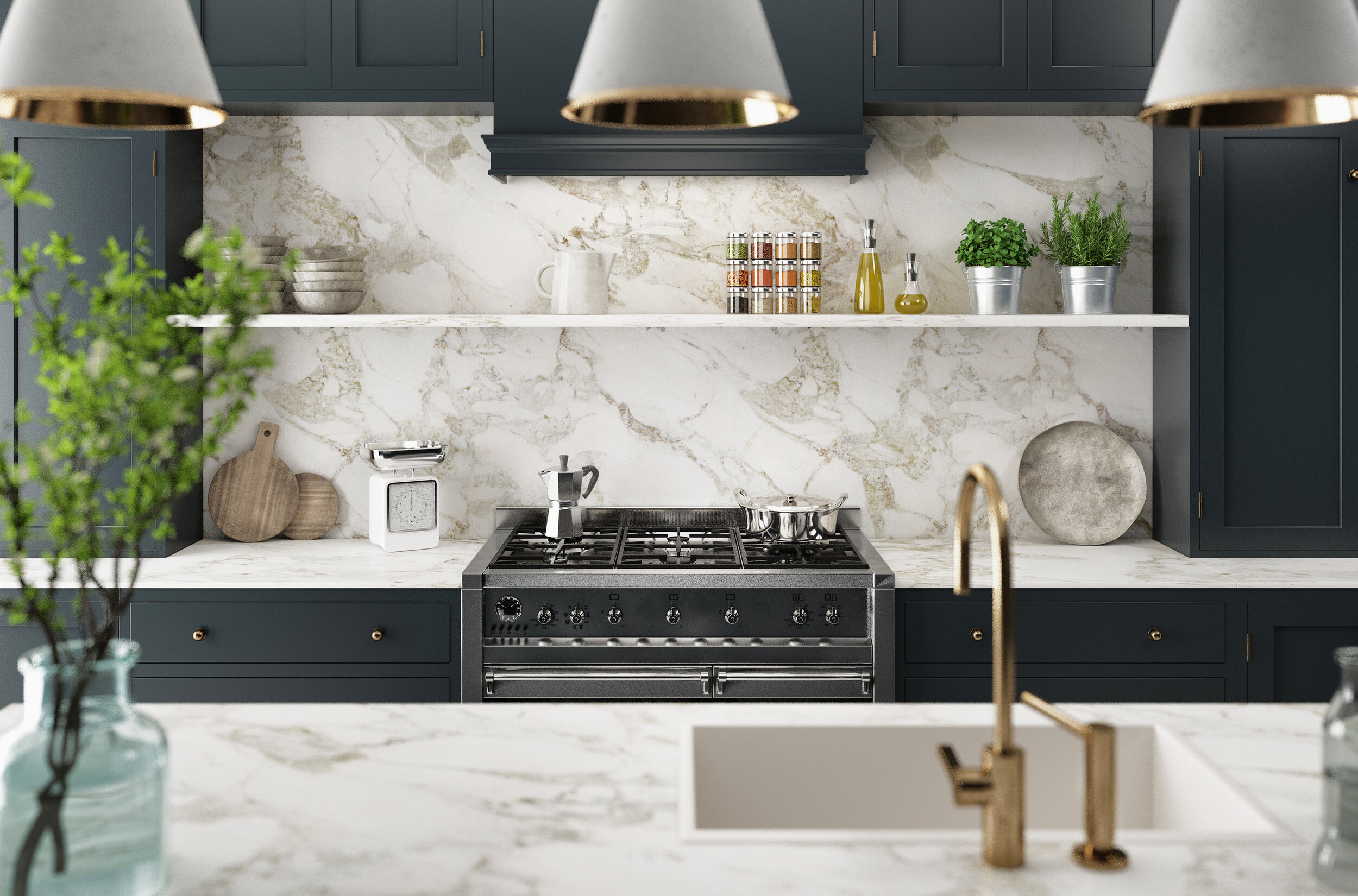Every homeowner wants the beautiful look of natural stone and tile in their home. However most homeowners don’t understand the maintenance required for these surfaces. Because there are so many differences between different types of stone and tile, care and maintenance can be tricky if you don’t know where to start or what to look for. What works for one surface does not necessarily work for the other. It is important to recognize what type of material you have in your home or place of business so that you can care for it appropriately. Here we will discover some of the main differences between the materials and general rules of thumb to when caring for marble, limestone, travertine, granite, quartzite, quartz, porcelain, flagstone, soapstone, and so on.
MARBLE, LIMESTONE, TRAVERTINE
Marble, limestone and travertine are all considered calcareous stones, meaning that they have calcium carbonate in them. When calcium carbonate comes in contact with any acidic products such as lemon juice, vinegar, wine, coffee, or even hard water from your tap, acid eats away at the calcium carbonate leaving behind a dull or rough area. This is called an etch mark and is only able to be removed with stone restoration.
Sometimes clients mistake etch marks for stains, however stains are completely different. Stains are absorbed into the pores of the stone and need to be cleaned up or drawn out of the stone completely using a special clay. Most stains we see come from oils, but some can come from hair dyes or other substances.
If you have marble, limestone, or travertine in your home, be sure that they are always sealed to protect them from excessive etching or staining. The sealer acts as a moisture-wicking barrier and keeps water and oils from being absorbed easily into the pores of the stone. As a result, the stone looks better for longer between professional stone restoration services.
Be sure to schedule routine stone restoration services to ensure your surfaces are always well cared for and always look excellent.
What NOT to do to your marble, limestone, travertine:
Do NOT use acidic cleaners on these surfaces because acid will cause damage
Do NOT skip sealing your surfaces
GRANITE AND QUARTZITE
Granite is composed of crystals and minerals making it extremely hard and dense. It is igneous which means it is a volcanic stone and made up of silica or silicates.
Granite has high abrasion resistance making it etch and scratch resistant. Since granite does not contain calcium, it does not react with acids the way marble, limestone, and travertine do. However, when not cared for, it can soak in stains over time.
Maintenance typically requires a basic polishing service. Removing scratches on granite by restoration is a very technical process and must only be done by trained professionals.
Granite crack repairs at the kitchen sink are common household issues. If you see one forming on your countertop, call CATA Stone Care & Restoration immediately. The longer you wait, the larger the crack will grow, and the more expensive will be the repair.
Quartzite is a very hard metamorphic rock that originated as sandstone. Through a process of high heating and pressurization sandstone is transformed into quartzite, an extremely strong and durable natural stone. It is harder and more dense than granite making it extremely durable. Aesthetically, it looks like marble due to the similiarity in patterns and colors.
Because of its low porosity and excellent durability, it is one of the more forgiving stones—resisting staining, scratching, heat, and breakage. While it is more resistant to chemicals and scratches than marble, quartzite can in fact etch and stain with prolonged exposure. To minimize risk, have your quartzite surfaces cleaned and sealed.
Quartzite should not be confused with manufactured quartz materials.
What NOT to do to your granite or quartzite:
Do NOT leave these surfaces unsealed. Issues such as dullness, pitting, or etching (in quartzite) can occur over time.
Do NOT leave cracked granite un-repaired. This is an indication of moisture. The longer you leave it un-repaired, the worse and more expensive the repair will become.
QUARTZ AND PORCELAIN
Quartz and porcelain are both manufactured materials often meant to mimic the properties and look of natural stone. They come in various colors and designs and is usually an affordable option. They are also very durable and easy to clean. It does not require regular maintenance, restoration, or even cleaning and sealing.
When in prolonged contact with acid however, quartz can etch, and this is not easily remedied through professional restoration. We highly recommend reaching out to the manufacturer for a solution.
Quartz and porcelain do scratch and chip more easily than natural stone. Quartz is a through-body stone meaning that the color and design go all the way through the material. Porcelain only has an image printed on the surface. Repairing chips or scratches in either of them is a very technical process and must only be done by trained professionals. Smaller chips may not accept the filler or sometimes the filler may come out over time. We are also unable to grind them flat to blend in the repairs.
What NOT to do to your quartz and porcelain:
Do NOT chip these surfaces. Repairs are difficult.
Do NOT place hot pots or pans on surfaces. They can cause discoloration or cracks.
CONCLUSION
Scheduling routine maintenance, taking action when you see an issue in your stone, and using the right cleaning and sealing products will help to ensure the longevity of your stone surfaces. When you have questions, reach out to the professionals at CATA Stone Care and Restoration to take care of you!


